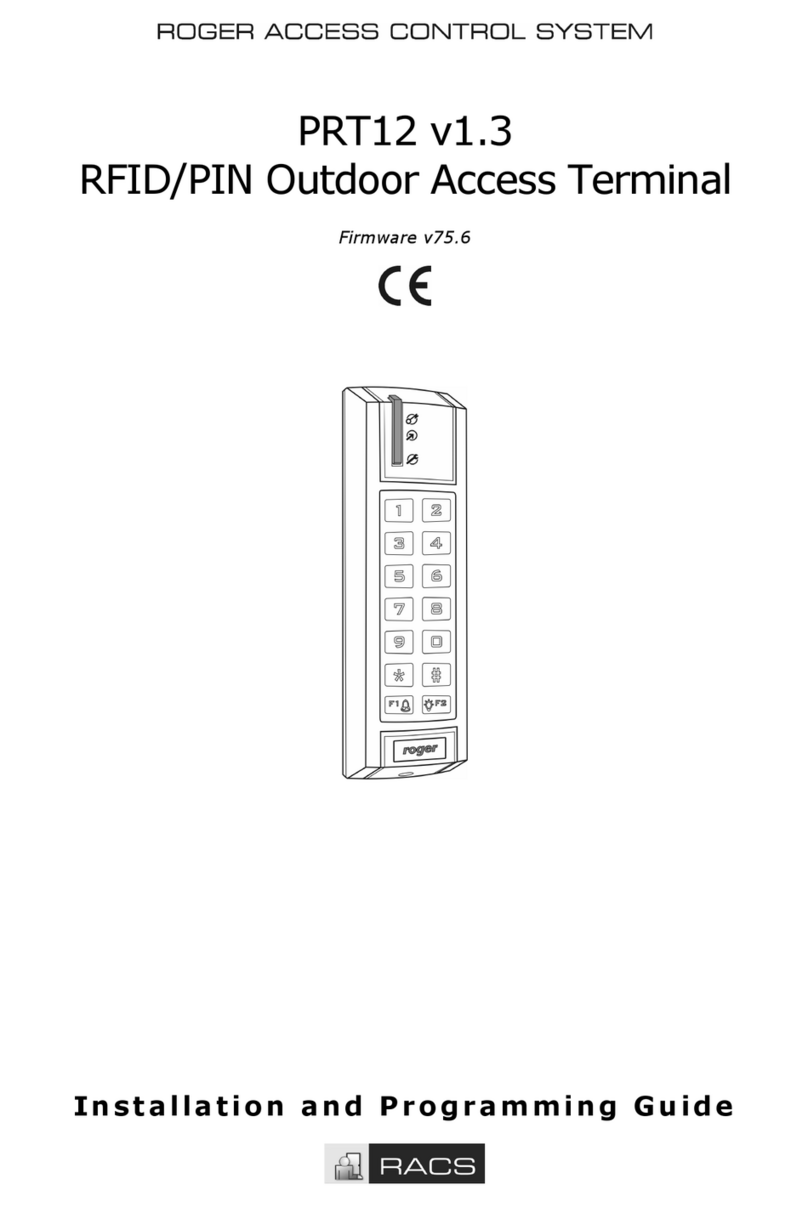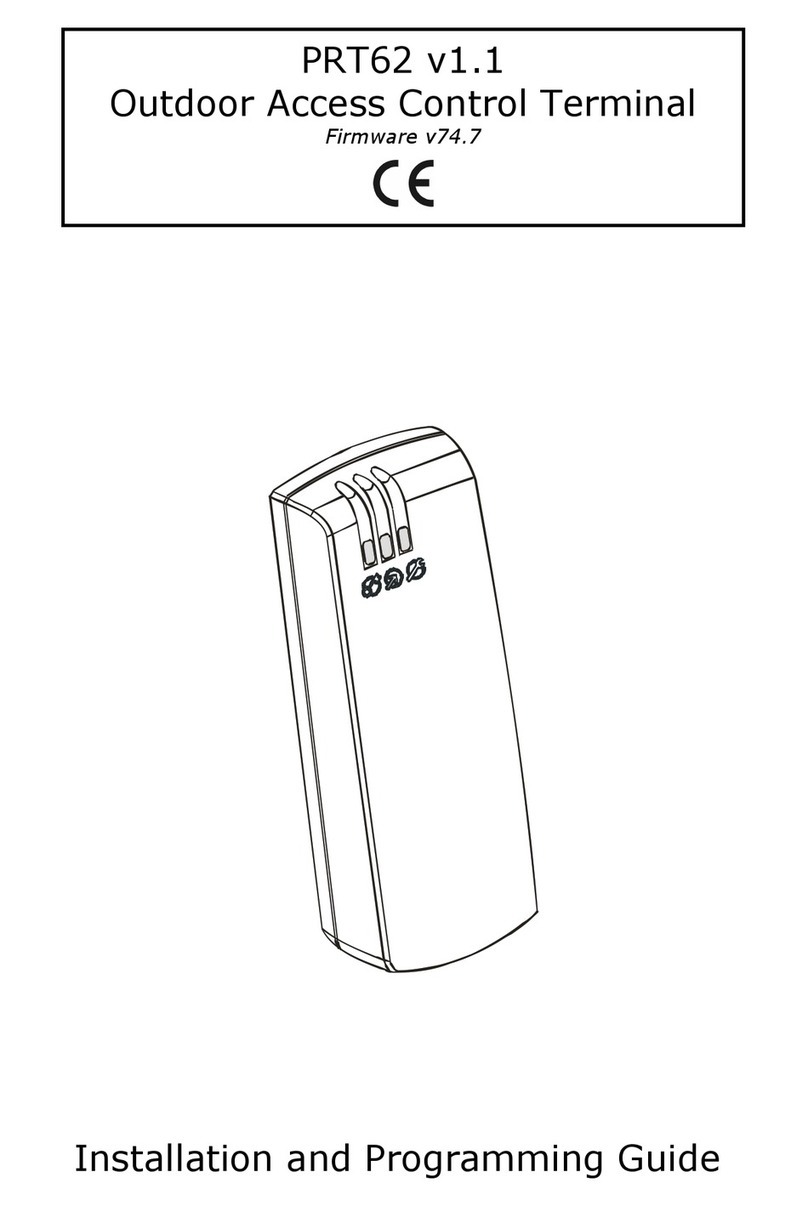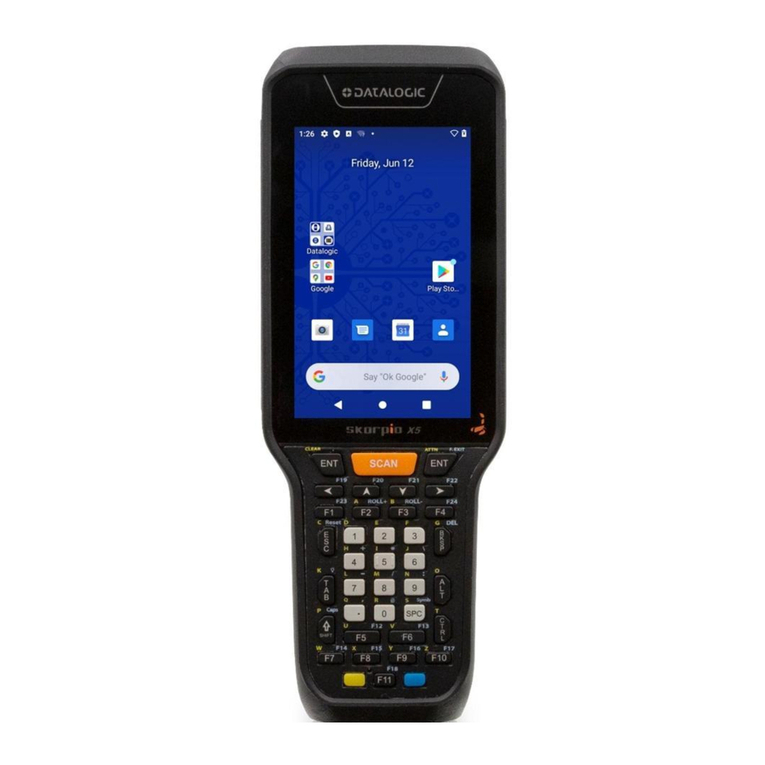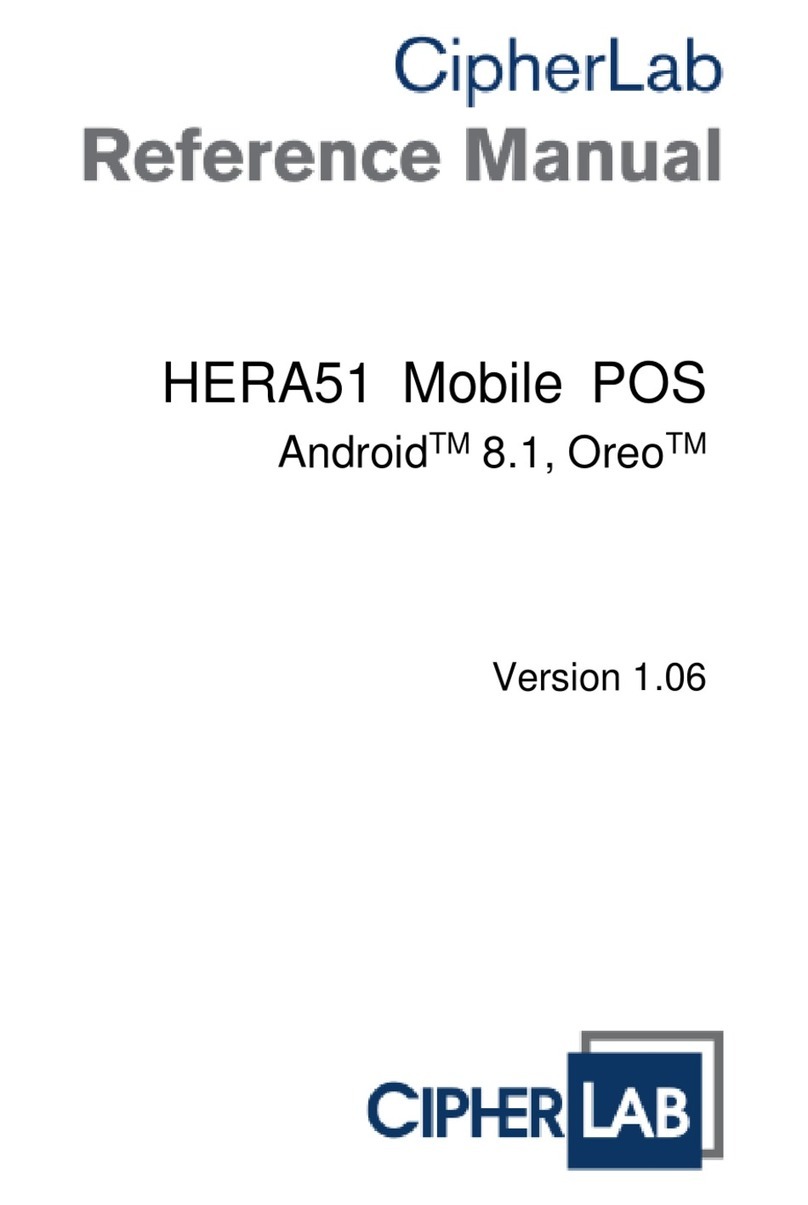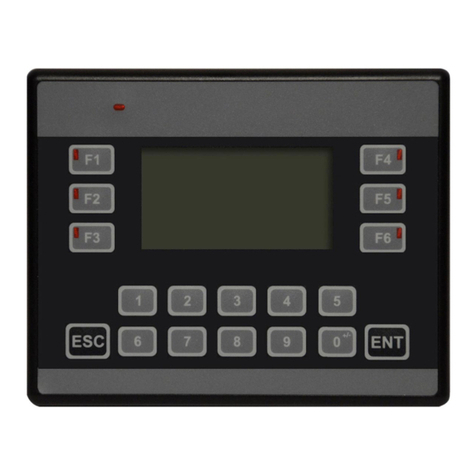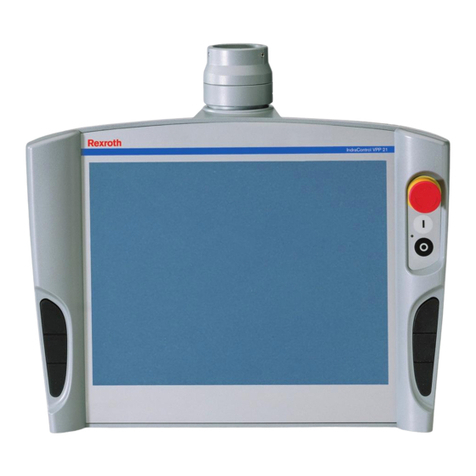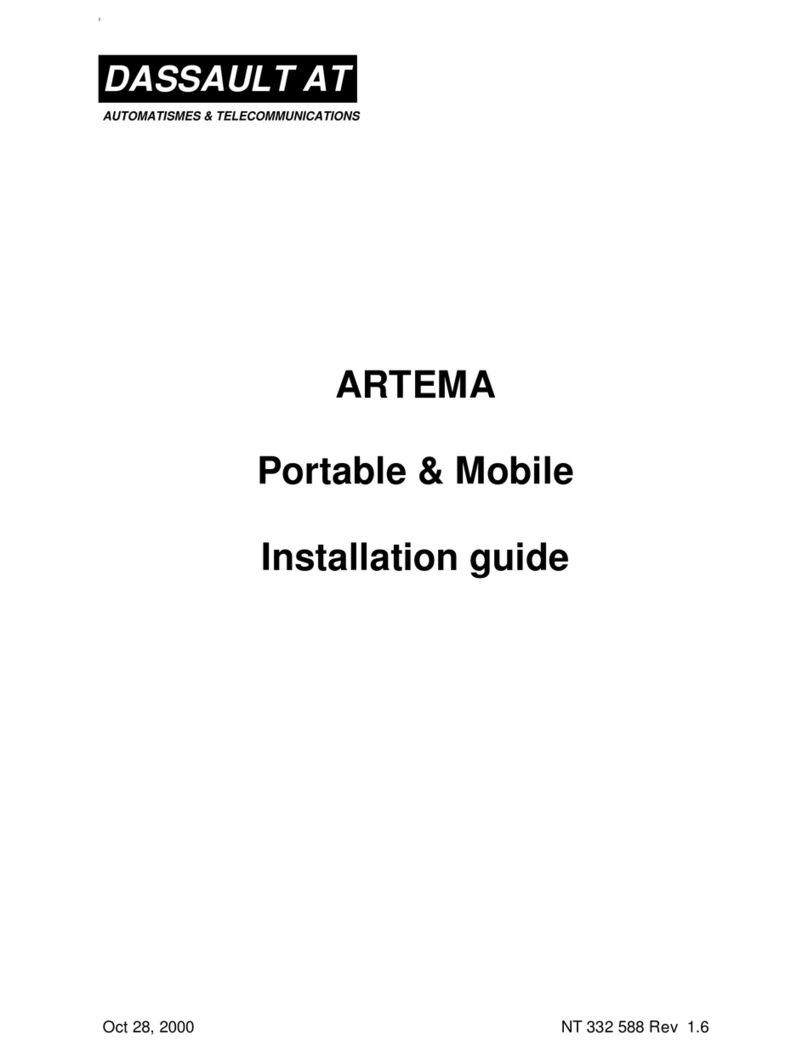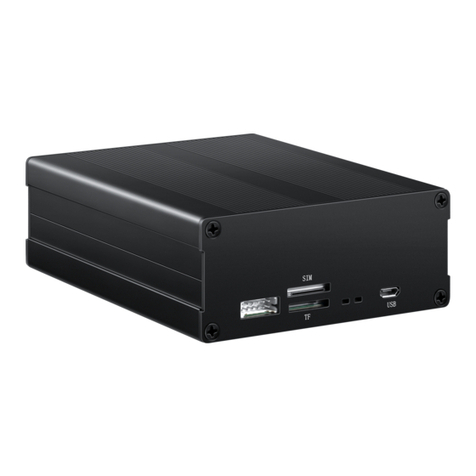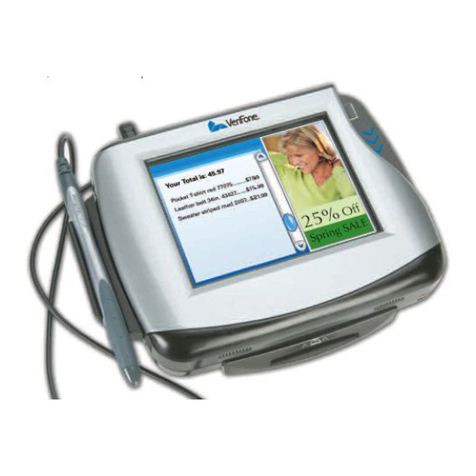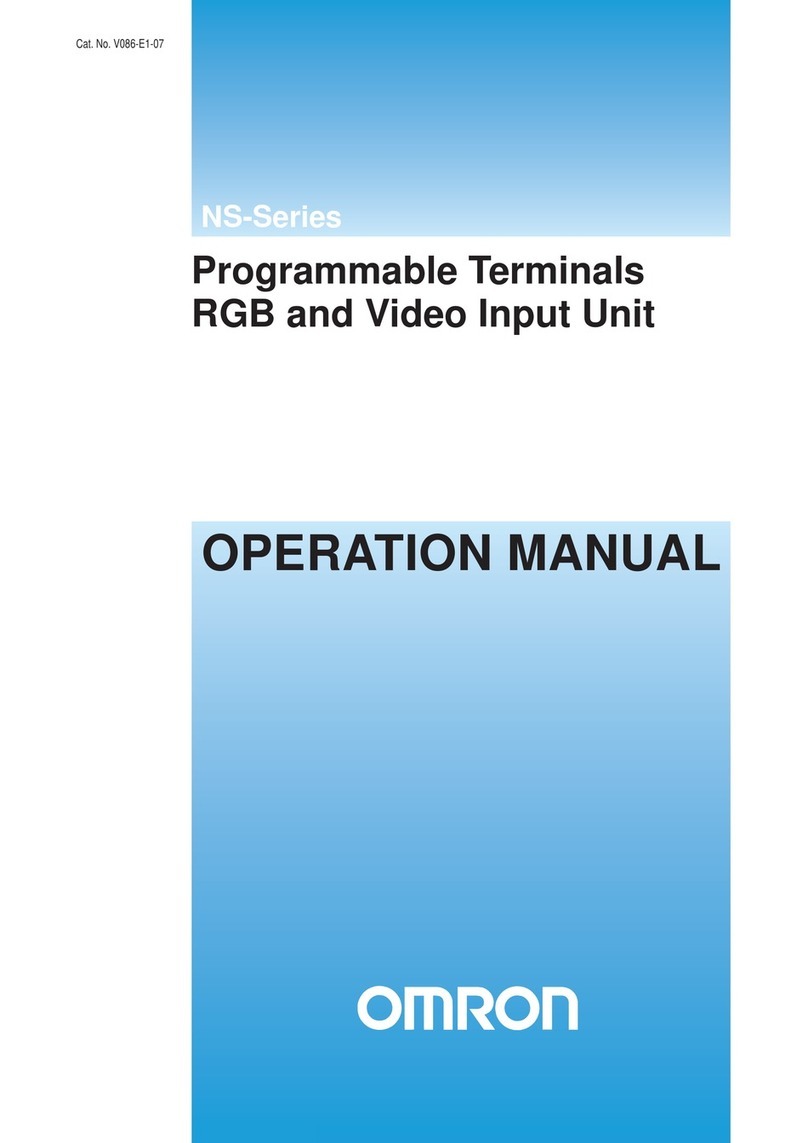Roger PRT-EM Series Installation guide

PRT-EM Series
EM 125 kHz
Access Terminals
Firmware v1.29 and v2.29
Rev. J
This document refers to the following products:
-PRT12EM
-PRT12EM-BK
-PRT32EM
-PRT42EM
-PRT42EM-BK
-PRT62EM
-PRT64EM
-PRT64EM-VP
-PRT66EM
Installation and Programming Guide

PRT-EM Series Readers fv 1.29 and 2.29 Rev. J.doc 2012-01-05
Page 2 from 59
1. GLOSSARY OF TERMS ................................................................................. 4
2. IMPORTANT NOTES ..................................................................................... 6
2.1. Compatibility Rules ........................................................................................................................... 6
2.2. About This Manual ............................................................................................................................. 6
3. GENERAL DESCRIPTION ............................................................................ 7
3.1. Features ................................................................................................................................................... 7
3.1.1. General ................................................................................................................................................ 7
3.1.2. Terminal Mode (Online Mode)..................................................................................................... 7
3.1.3. Standalone Mode (Offline Mode)................................................................................................ 7
3.2. Proximity Cards................................................................................................................................... 8
3.2.1. T5555 and T5557 Cards................................................................................................................ 8
3.3. Function Keys ....................................................................................................................................... 8
4. OPERATING MODES..................................................................................... 9
4.1. Terminal Mode...................................................................................................................................... 9
4.1.1. Wiegand Formats ............................................................................................................................. 9
4.1.2. Magstripe Formats......................................................................................................................... 10
4.1.3. RACS Format ................................................................................................................................... 10
4.1.4. RS232, EPSO Protocol (9600, N, 8, 1)................................................................................. 10
4.1.5. RS232, Cards and Keys (9600, N, 8, 1) ............................................................................... 10
4.1.6. RS232, Cards and PIN-s (9600, N, 8, 1 )............................................................................. 11
4.2. Standalone Mode .............................................................................................................................. 11
4.2.1. Full Standalone Mode ................................................................................................................... 12
4.2.2. Simple Standalone Mode............................................................................................................. 12
5. STANDALONE MODE.................................................................................. 13
5.1. Users........................................................................................................................................................ 13
5.1.1. Managing the Users ...................................................................................................................... 13
5.1.2. User Identification ......................................................................................................................... 14
5.2. Door Unlocking .................................................................................................................................. 14
5.3. Facility Code ........................................................................................................................................ 14
5.4. Arming Modes..................................................................................................................................... 14
5.4.1. Arming/Disarming Methods ....................................................................................................... 15
5.5. Door Bell Function ........................................................................................................................... 17
5.6. Function Keys ..................................................................................................................................... 17

PRT-EM Series Readers fv 1.29 and 2.29 Rev. J.doc 2012-01-05
Page 3 from 59
5.7. Door Alarm ........................................................................................................................................... 18
5.8. Tamper Alarm ..................................................................................................................................... 18
5.9. Intruder Alarm................................................................................................................................... 18
5.10. Duress Alarm.................................................................................................................................... 19
5.11. General Alarm.................................................................................................................................. 19
5.12. Events Recording........................................................................................................................... 19
5.13. Real Time Clock .............................................................................................................................. 20
5.14. Timers .................................................................................................................................................. 20
5.15. Optical and Acoustic Signals................................................................................................... 21
5.16. Operation with XM-2 I/O Extension Module ................................................................. 22
5.17. Operation with Second PRT Series Reader..................................................................... 23
6. PROGRAMMING........................................................................................... 24
6.1. Programming the PRT-EM Readers without Keypad ................................................... 24
6.1.1. Programming Through Multiple Readings of the Programming Card......................... 24
6.1.2. Programming From The External Reader ............................................................................. 25
6.2. Memory Reset..................................................................................................................................... 25
7. OPERATING MODES................................................................................... 27
8. INSTALLER PROGRAMMING................................................................... 31
8.1. Input/Output Functions............................................................................................................... 34
9. USER PROGRAMMING MODE.................................................................. 37
9.1.1. User Programming Commands................................................................................................. 37
10. PROGRAMMING FROM PC ..................................................................... 40
10.1. Programming via RS232 COM port...................................................................................... 40
10.2. Programming via RUD-1 interface ...................................................................................... 41
10.3. Firmware Upgrade ........................................................................................................................ 42
10.3.1. Firmware upgrade via RS232 COM port ............................................................................. 42
10.3.2. Firmware upgrade via RUD-1 interface .............................................................................. 42
11. INSTALLATION GUIDELINES............................................................... 44

PRT-EM Series Readers fv 1.29 and 2.29 Rev. J.doc 2012-01-05
Page 4 from 59
1. GLOSSARY OF TERMS
Door Release or Door Lock
Electric device used to lock/unlock a door. Typically it can be a door strike, solenoid lock or
magnetic lock.
Identifier
The physical item or method which is used for identification of users. It can be a proximity card, a
PIN code, a finger template etc. In some cases identifier may consist of two or more items required
for a single identification procedure. For example when option Card and PIN is active then
Identifier=Card+PIN.
Identification Mode
The method used for identification of users, it can be Card or PIN, Card and PIN, Card only,
PIN only etc.
Memory Reset
The procedure which clears contents of device’s memory and restores default (factory) settings.
PRT Series Readers
The PRT reader’s family developed and manufactured by Roger.
Restart
The situation when device goes through the initialization procedure, the same as when it is
powered up.
Roger Access Control System (RACS)
The access control system which consists of PR series access controllers developed and
manufactured by Roger.
Access Control Unit (ACU)
The logic device which provides access control, usually it is an access controller.
XM-2 I/O Extension Module
The remote I/O extension module for RACS system. The XM-2 provides two NO/NC inputs and two
relay outputs.
Full Standalone Mode
The operation mode in which reader autonomously controls a door passage. When operating in Full
Standalone Mode the PRT-EM reader requires the remote XM-2 extension module, also in this
mode it can operate with another (second) PRT series reader thus providing two-way passage
control.
Simple Standalone Mode
The operation mode in which reader independently controls a door passage. When in Simple
Standalone Mode the PRT-EM reader uses its internal I/O lines as general purpose I/Os but is not
capable to operate with XM-2 I/O module and/or second PRT series reader.
RACS Interface
The electrical interface and addressable protocol developed by Roger. This interface is implemented
in access readers and controllers manufactured by Roger. The RACS interface uses two
communication lines (CLK and DTA) and proprietary communication protocol capable to address up
to 16 devices.
EPSO Protocol
The addressable, half duplex, serial communication protocol developed by Roger. This protocol
allows a host device (PC or controller) for direct control of the reader’s hardware through the set of
remote commands.

PRT-EM Series Readers fv 1.29 and 2.29 Rev. J.doc 2012-01-05
Page 5 from 59
RARC Program
This program allows for programming and maintenance of the PRT series reader which are
equipped with serial communication interface.
RogerISP Program
This program allows for firmware upgrade in access controllers and readers manufactured by
Roger.

PRT-EM Series Readers fv 1.29 and 2.29 Rev. J.doc 2012-01-05
Page 6 from 59
2. IMPORTANT NOTES
Note: The PRT-EM term refers to any type of access terminal from PRTxxEM series readers. It is
clearly indicated when given information refers solely to specific device and is not valid for entire
series.
The PRT-EM reader can be configured for several operating modes however the factory shipped
unit is pre-configured for RACS address ID=0.
The PRT-EM reader can be programmed in following ways:
Manually from the keypad located on primary reader (when available)
Manually from the keypad located on secondary reader (when available)
Manually by multiple readings of the so called Programming Card
Remotely from PC computer with RARC program
If the reader is dedicated for operation in standalone mode (offline operation) and has to be
programmed manually, it is necessary to program two special users into the reader: MASTER and
INSTALLER, each of them can have card and/or PIN.
Any proximity card or tag can be programmed as MASTER or INSTALLER card. The same card can
be programmed as MASTER or INSTALLER card to multiple readers. Whenever required (e.g. when
stolen or lost) the new MASTER and INSTALLER cards can be programmed into given unit. No
proximity cards are shipped with factory new unit - if necessary, installer must arrange and enroll
them to the reader by himself.
Note: If after power up the LED SYSTEM is lit it means that contents of reader’s memory is
corrupted. In this case reader must be initialized and programmed anew.
2.1. COMPATIBILITY RULES
Always check the firmware and hardware version for which manual is dedicated. Using wrong
version of manual may cause that device will not behave as described in document.
Also, when you upgrade firmware in the reader assure that the new firmware is dedicated for given
type of reader (it must be clearly stated that given firmware is dedicated for given type of product
you have). Once the firmware is uploaded assure adequate manual for the upgraded device.
2.2. ABOUT THIS MANUAL
This manual is dedicated for all versions of PRT-EM readers: with keypad and without keypad. No
matter if the PRT-EM readers have built-in keypad or not they represents the same logical
functionality. The only difference between various types of PRT-EM series readers is limited to
theirs mechanical construction, environment in which they can be installed and keypad which exist
in limited number of PRT-EM readers. As the result of these the same configuration settings can be
used to program various members of PRT-EM readers; also using RARC program configuration
settings can be transferred (copied) between different members of PRT-EM family.
Theoretically, it is possible to program and use PIN codes and other functions related with keypad
on PRT-EM readers which are not physically equipped with keypad however this has practical sense
only when PRT-EM reader without keypad operates in Full Standalone Mode with another
(second) PRT-EM reader which has built-in keypad. In such scenario users can utilize keypad
functions (including PIN codes) on this second (slave) reader.
When PIN codes are programmed into reader without keypad it is obvious that they cannot be used
on this individual reader however still they will exist in configuration settings of this particular unit
and can be transferred from the reader to PC and then to another PRT-EM unit.

PRT-EM Series Readers fv 1.29 and 2.29 Rev. J.doc 2012-01-05
Page 7 from 59
3. GENERAL DESCRIPTION
The PRT-EM readers have been designed for use in access control installations to enable user
identification via EM 125 KHz (and compatible) proximity cards and/or PIN-s.
Readers can be configured for standalone operation (Offline Mode) or as an ordinary slave
readers (Online Mode) connected to the external access control unit (ACU) supporting compatible
data interface formats, this kind of operation is called Terminal Mode.
When configured for standalone operation PRT-EM reader independently (i.e. autonomously)
controls the supervised door access point. For this mode reader offers two variants of installation:
first of them uses the reader’s built-in I/O signal lines as programmable inputs and outputs, the
second one uses them for communication with external XM-2 I/O module and second (optional)
PRT series reader. An access control installation containing two PRT readers (one at the entry and
other at the exit side of the supervised door) enables two-way door control. Also, the system setup
utilizing the XM-2 module provides higher level of security for the entire door access control system
by separating its logical element (reader) from the relay which physically controls a door lock.
The PRT-EM reader configured for Terminal Mode works as a slave unit serving a sole purpose of
reading cards/PIN-s then providing subsequent transmission of such collected data to host ACU for
further processing. Reader offers several data transmission formats including popular Wiegand and
Magstripe data protocols.
The PRT-EM reader can be also used as T5555 (Q5) and T5557 type card writer however the
standard version of RARC program which is distributed for free doesn’t support card programming
function. In order to use the reader as a card writer apply for special license available for the RARC
program.
3.1. FEATURES
3.1.1. General
EM 125 KHz proximity cards (EM4100/4102 compatible)
T5555 (Q5) and T5557 card programmer (*)
Up to 15 cm reading range
Can operate with second PRT series reader as a slave unit
Tamper switch
Configurable as standalone access unit or slave reader
Various operating temperatures (depend on particular reader)
Outdoor and indoor installations (depend on particular reader)
Programming and firmware upgrade through serial port
RARC configuration program (for Windows)
(*) - when operating with licensed version of the RARC program (contact Roger for more details)
the PRT-EM reader can be used as T5555 (Q5) and T5557 card programmer
3.1.2. Terminal Mode (Online Mode)
26/32/32 reversed/34/42/66 bit Wiegand data formats
Magstripe data format (ABA Track II emulation)
RACS data output format (Roger format)
RS232, EPSO protocol
RS232, direct output of cards and keys
RS232, direct output of cards and PIN-s
Various options for transmission of PIN-s and keys
LED control input
BUZZER control input
3.1.3. Standalone Mode (Offline Mode)
System settings stored in nonvolatile memory
120 indexed users with card and/or PIN-s

PRT-EM Series Readers fv 1.29 and 2.29 Rev. J.doc 2012-01-05
Page 8 from 59
User indexing (ID indexed user records)
Card or PIN or Card and PIN identification
Real time clock (100 year)
Automatic winter/summer time change
1000 event log
Built-in 1.5A relay output
Support for door contact and exit button
Door Alarm and Door Bell outputs
Integration with the alarm system trough I/O-s
Two way door control (requires second PRT reader)
Operation with XM-2 I/O extension module (Full Standalone Mode)
3.2. PROXIMITY CARDS
The PRT-EM was designed for EM 125 KHz proximity cards compatible with EM 4100/4102
transponders. When in online mode reader returns card number without check sum bits. Card
number is transmitted starting from the LSB to MSB and if required (it depends on the data output
format selected for the given reader) can be supplemented with leading zeros or reduced on the
MSB positions.
3.2.1. T5555 and T5557 Cards
The T5555 (Q5) and T5557 cards are special type of EM cards which can be programmed. Using
any PRT-EM reader together with licensed version of RARC program it is possible to read and write
card’s Chip Serial Number.
3.3. FUNCTION KEYS
Some of the PRT-EM series readers are equipped with two (e.g. PRT12EM) or one (PRT42EM and
PRT42EM-BK) function keys: [F1]- marked with door bell icon and [F2] – marked with the light
bulb icon. The function of each function keys depends on the reader’s operation mode.
When in RACS Mode, pressing function key will cause transmission of the relevant code to the
host controller which can further take adequate action (e.g. trigger door bell, light etc.). The host’s
reaction for function key always depends on its configuration.
When in Wiegand or Magstripe modes, pressing the F1/F2 causes following codes send over the
output lines:
For Wiegand:
F1=C hex
F2=D hex
For Magstripe:
F1=FF FF FF FF BC hex (1099511627708 dec)
F2=FF FF FF FF BD hex (1099511627709 dec)
When PRT-EM operates in standalone mode (either Full Standalone Mode or Simple Standalone
Mode) by default the F1/F2 keys work as door bell buttons however they can be eventually
configured to control AUX1/AUX2 outputs. Also, in Full Standalone Mode function keys on
secondary reader (if available) have the same functions as assigned for function keys on main
reader even when the main reader has no keys at all.

PRT-EM Series Readers fv 1.29 and 2.29 Rev. J.doc 2012-01-05
Page 9 from 59
4. OPERATING MODES
There are two main modes of operation available for the PRT-EM reader:
Terminal Mode (Online Mode)
Standalone Mode (Offline Mode)
4.1. TERMINAL MODE
In this mode reader operates as a slave unit connected to the external access controller. In
Terminal Mode reader transmits collected data (card or PIN) to the host for further processing.
The PRT-EM offers following data transmission formats:
Wiegand 26bit
Wiegand 32bit, normal mode (from MSB to LSB)
Wiegand 32bit, reverse order (from LSB to MSB)
Wiegand 34bit
Wiegand 42bit
Wiegand 66bit
Magstripe (ABA Track II emulation, also called Clock & Data)
RACS (for communication with PR series of controllers from Roger)
RS232, EPSO protocol (transactional protocol, reader responses commands received
from the host)
RS232, cards and individual keys
RS232, cards and PIN-s
4.1.1. Wiegand Formats
When employing Wiegand transmission format, data is
send to the host using sequences of short pulses
transmitted over CLK and DTA lines. Depending on the
selected version of the transmission format, the reader
can send 26, 32, 34, 42 or 66 bits to the host.
In Wiegand format, a dual color LED STATUS lights
steady in red, LED OPEN is controlled by IN1 while
buzzer is controlled by IN2. Both inputs (IN1 and IN2) are
triggered by shorting them to supply minus. In addition,
whenever card is read or PIN is entered reader activates
momentary LED SYSTEM and buzzer.
Note: For card codes which require more bits than the number of bits available in the selected data
transmission format, reader omits the most significant bits (MSB-s) of the card code. As a result
transmission from a reader is not equal to the full card code.

PRT-EM Series Readers fv 1.29 and 2.29 Rev. J.doc 2012-01-05
Page 10 from 59
4.1.2. Magstripe Formats
When employing Magstripe transmission format, data is
transferred to the host using electric signal waves
transmitted over the CLK and DTA lines. In Magstripe
format a dual color LED STATUS lights steady in red,
LED OPEN is controlled by IN1 while buzzer is
controlled by IN2. Both inputs (IN1 and IN2) are
triggered by supply minus. In addition, whenever card is
read or PIN is entered reader activates momentary LED
SYSTEM and buzzer. Card code is always transmitted
as a whole number (no digits are lost).
4.1.3. RACS Format
When employing RACS format, the PRT-EM unit
communicates with the host via CLK/DTA lines. Unlike
in the Wiegand and Magstripe formats, the PRT-EM
unit using RACS format requires an individual
address (ID=0…3) to be set during configuration of
the reader. With RACS format, communications
between the PRT-EM reader and the host is bilateral,
this allows controller to monitor communication. The
reader’s LED-s and the buzzer are controlled by the
host unit.
Note: When all LED-s are flashing it indicates that
reader lost communication with the host unit.
When in RACS mode triggering of the IN1 disables
reading of the card and keypad. This input can be
used for temporary disabling of the reader. The IN2 is not used in RACS mode.
4.1.4. RS232, EPSO Protocol (9600, N, 8, 1)
When programmed to this protocol reader operates in transaction mode, i.e. responds only to
external commands received through the RS232 port. The software developer or system integrator
must incorporate EPSO protocol into the host device (usually PC or microcontroller) to
communicate with the reader.
In RS232 EPSO reader answers only those data packets which come from the host unit and are
addressed with reader’s ID number (address). The EPSO protocol is the set of communication
functions used to control the reader’s hardware (inputs, outputs, LED-s, buzzer, keypad and
reading of cards). The PRT-EM configured for EPSO mode acts as pure “terminal”, it means that it
strictly follows commands received from the host unit. The full description of EPSO protocol can be
found on www.roger.pl.
4.1.5. RS232, Cards and Keys (9600, N, 8, 1)
Once the card is read or key is pressed reader outputs card/PIN data on TXD transmission line.
Reader outputs card code as 10 hex number while each pressed key is transmitted separately as 2
hex coded ASCI characters.
Output Format for Cards
STX DATA CR LF ETX
02 hex 10 hex digits coded ASCII 0D hex 0A hex 03 hex

PRT-EM Series Readers fv 1.29 and 2.29 Rev. J.doc 2012-01-05
Page 11 from 59
Output Format for Keys
STX DATA CR LF ETX
02 hex 2 hex digits coded ASCII 0D hex 0A hex 03 hex
Key Codes
Key 0 1 2 3 4 5 6 7 8 9 * # F1 F2
Code F0 E1 D2 C3 B4 A5 96 87 78 69 5A 4B 3C 2D
4.1.6. RS232, Cards and PIN-s (9600, N, 8, 1 )
Once the card is read or PIN code is entered reader outputs card/PIN data on TXD transmission
line. Reader outputs card code as 10 hex digit number, PIN code is transmitted as whole number
max. 16-digit long. Each pressed key is buffered and transmitted as a whole PIN when [#] key is
pressed. The [#] key is treated as the end of the PIN.
Output format for cards
STX DATA CR LF ETX
02 hex 10 hex digits coded ASCII 0D hex 0A hex 03 hex
Output format for PIN-s
STX DATA # CR LF ETX
02 hex 16 hex digits coded ASCII 23 hex 0D hex 0A hex 03 hex
The [*], [F1] and [F2] keys are transmitted in this format in the same way as PIN-s:
[*]: STX / 'A' / '#' / CR / LF / ETX
[F1]: STX / 'C' / '#' / CR / LF / ETX
[F2]: STX / 'D' / '#' / CR / LF / ETX
4.2. STANDALONE MODE
The PRT-EM reader offers two sub-modes for standalone operation:
Full Standalone Mode
Simple Standalone Mode
In both modes reader is capable of providing independent (i.e. autonomic) control of a single door
passage.

PRT-EM Series Readers fv 1.29 and 2.29 Rev. J.doc 2012-01-05
Page 12 from 59
4.2.1. Full Standalone Mode
In this mode the CLK and DTA lines are used for communication with the remote XM-2 I/O
extension module and the second (optional) PRT reader. The second reader enables two-way door
control also it can be used for programming of the main reader. Each I/O line (no mater built-in or
located on extension module) can be configured to various options. The Full Standalone Mode
offers improved security, because it separates the reader from the attenuators which are used to
control a door lock or other type of equipment.
Note: In Full Standalone Mode the optical and buzzer signals occur simultaneously on both
readers. This rules is valid for programming mode and normal operation as well.
The maximum length of the cable run between the PRT-EM reader and the XM-2 module, or
secondary PRT reader is limited to 150 m. For two-way door control the primary reader needs to be
configured for Full Standalone Mode while the secondary one (slave) needs to be set for RACS
address ID=0.
Note: For Full Standalone Mode the XM-2 I/O extension module has to be configured for address
ID=5.
4.2.2. Simple Standalone Mode
In this mode the CLK and DTA lines are used as
programmable inputs or outputs while the IN1 and
IN2 lines operates always as programmable inputs.
The built-in REL1 operates as output only. Each I/O
line can be configured to have one from several
available functions.
Note: The CLK and DTA lines may operate either as
inputs or outputs. The function assigned to CLK or
DTA line automatically defines whether this line will
operate as output or input. If configured to be an
output, the CLK or DTA line operates as an open
collector line capable to sink up to 150 mA. Such a
current is usually sufficient to drive relay used for a
door lock control. When necessary, both lines (CLK
and DTA) can be configured to the same output
function and connected together (shorted) for
increased output current (max. 300mA).

PRT-EM Series Readers fv 1.29 and 2.29 Rev. J.doc 2012-01-05
Page 13 from 59
5. STANDALONE MODE
5.1. USERS
When operating in standalone mode, the PRT-EM reader can register up to 120 users, each with a
card and/or PIN (3-6 digits). Entry of a PIN code must be followed by the [#] which is required to
mark the end of the PIN. Users can be identified by their PIN-s or cards. When the Card and PIN
option is active, user must first present card and then subsequently enter PIN. The Identification
Mode can be set individually for primary and secondary reader.
Note: In standalone mode reader uses full card code (40 bits).
The PRT-EM reader supports five types (classes) of users:
MASTER
INSTALLER
NORMAL
TOGGLE
TOGGLE LTD
Types of Users
Type ID Authorisation Programming
MASTER None This user is allowed to enter User Programming
mode and can have card and/or PIN.
Memory Reset
and User
Programming
INSTALLER
None This user is allowed to enter Installer Programming
mode only and can have card and/or PIN.
Memory Reset
and User
Programming
NORMAL 0-119 NORMAL users are solely authorized to unlock the
controlled door, they can have card and/or PIN.
User
Programming
TOGGLE 0-119 TOGGLE users are authorized to unlock the controlled
door and to switch reader between armed and
disarmed mode, they can have card and/or PIN.
User
Programming
TOGGLE
LTD
0-199 TOGGLE LTD (TOGGLE LIMITED) are solely authorized
to switch reader between armed and disarmed modes,
they can have card and/or PIN.
User
Programming
Note: All users can be programmed from RARC program as well.
Note: The MASTER and INSTALLER card can be used as so called Programming Cards when
employing programming method of multiple readings of proximity card (for readers without
keypad).
5.1.1. Managing the Users
A new user can be registered in the reader using either the Simple Programming or Full
Programming procedure.
The Simple Programming procedure consists of programming of a PIN and/or card without
specifying the ID number of a user to whom the programmed PIN/card will be assigned — as the
result reader simply stores the PIN/card in the first unoccupied user’s ID number.
The Full Programming procedure requires specifying of the ID number for the new user being
programmed which has to be followed by his PIN and/or card.
Note: When you program a user using the Full Programming procedure, later you will be able to
selectively delete or modify him by using his ID number. If you program card/PIN using the

PRT-EM Series Readers fv 1.29 and 2.29 Rev. J.doc 2012-01-05
Page 14 from 59
Simple Programming procedure then to remove the given card/PIN from the reader you must
present card to the reader or enter PIN code to be deleted, otherwise the only one method to
remove them from the reader will be Memory Reset procedure which will clear all user data and
configuration setting stored in the reader as well.
5.1.2. User Identification
In PRT-EM reader every user can be identified by card, PIN or both (when Card and PIN mode is
active). The method which reader uses for user’s identification depends on the actual
Identification Mode. The PRT-EM enables following Identification Modes:
Card or PIN, user must read his card or enter his PIN code
Card and PIN, user must read his card and then subsequently enter his PIN code
Note: The Identification Mode can be programmed individually for primary and secondary reader
(when operation in Full Standalone Mode).
5.2. DOOR UNLOCKING
In order to unlock a door user is required to use his identifier once (card and/or PIN). Whenever
this happen, reader activates momentarily LED SYSTEM (orange) and generates short
confirmation beep. After successful identification reader unlocks a door for time defined by Door
Unlock Time. Once opened door should be closed within Door Open Timeout – otherwise Door
Ajar alarm will arise.
Note: The LED OPEN is activated for the entire time when door lock output is active. When
access to the room is denied, reader generates a long continues beep.
The access to a room can be denied in following situations:
When entered identifier (card/PIN) is not valid (unknown)
When reader is armed and the option Access disabled when reader armed is active
When entered identifier is belongs to TOGGLE LTD class user
When identification method wasn’t full (e.g. user presented only card but Card and
PIN mode was set active on the unit)
Note: With option Access disabled when reader armed the TOGGLE or TOGGLE LTD users may
change reader’s arming mode thus enabling or disabling access to a controlled door. Sometimes,
armed and disarmed states can be thought as night and day modes.
5.3. FACILITY CODE
The Facility Code (also called Site Code) is a specific part of the entire card code which indicate
group of card. For example when Facility Code is defined as 245 all cards which begin with “245”
will comply with given Facility Code (e.g. 24532AB450, 245D4523AA, 2453456231 will comply
while 12A4562432, 3214534522, 2353414422 will not).
When Facility Code option is active reader first searches if the card belongs to any user registered
in the reader, if not, it verifies if this card comply with given Facility Code, when yes card is
accepted as it was valid NORMAL user card, if not card is rejected.
Thanks to this feature reader may be used to grant access to large number of users which are not
programmed individually into the reader but they have cards which comply with given Facility
Code.
The whole card code may have up to 10 digits coded in HEX (13 digits coded in DEC). When
defining the Facility Code installer must specify digit locations and their values in HEX format. For
example when Facility Code was defined as “xxxx1ABxxx” every card which has the same pattern
will be accepted by the reader regardless of the fact that it is not registered individually in reader’s
memory. The positions marked with x are not analyzed for compliance with Facility Code.
5.4. ARMING MODES
When in the standalone mode reader may stay in one from two arming modes: Armed or
Disarmed. The actual arming mode of the reader is indicated on the dual color LED STATUS ,
which lights in red for Armed and green for Disarmed. Optionally, the actual arming mode can be
indicated on the output line configured to option [44]: Disarmed Mode or [45]: Armed Mode.
Such a configuration allows the output line to be used to arm/disarm of a connected alarm system

PRT-EM Series Readers fv 1.29 and 2.29 Rev. J.doc 2012-01-05
Page 15 from 59
or to switch on/off some other auxiliary system or device (e.g. heating, lights etc.). In general, the
current arming mode of the reader have no influence on access rights unless the option Access
disabled when reader armed is enabled. With this option activated, reader can only grant access
when it works in disarmed mode.
Using the option mentioned above the TOGGLE and TOGGLE LTD users are allowed to enable or
disable access to the supervised room through switching the reader between armed and disarmed
modes. Also, it allows for automatic access locking upon the reader entering Armed mode.
Note: Although the arming modes of the reader were originally designed for integration with
alarm system, they can be alternatively used for other control purposes which require on/off
control method (light control, heating control etc). Upon powering on, reader automatically returns
to the arming mode it was in before powered off. Also, the reader returns to its previous arming
mode when leaving the programming mode. After Memory Reset reader always enters Armed
mode.
5.4.1. Arming/Disarming Methods
Note: The term “arming” should be understood here as the action effecting a switch into Armed
mode, whereas the term “disarming” as a switch into Disarmed mode. The term “reader’s arming
mode” should be understood as actual state (either Armed or Disarmed mode) of the reader.
Reader can be armed/disarmed by means of TOGGLE/TOGGLE LTD users or by input line
programmed to option [24]: Arming/Disarming Key Switch. When arming mode is controlled
by input [24] reader changes its arming mode solely and unconditionally, according to the current
state of this input.
Attempt to arm the reader by means of TOGGLE or TOGGLE LTD users is rejected in following
situations:
When input [23]: Arming Disabled is active (which might indicate that alarm system is
not ready for arming)
When input [21]: Door Contact is open (door is not closed)
When input [27]: Intruder is open (intruder detected in area)
None of conditions listed above affects disarming of the reader – disarming is always unconditional.
Arming/Disarming by TOGGLE user card or PIN
The action needed by a TOGGLE user to change arming mode of the reader is to read twice
(sequentially) the TOGGLE card or to enter twice (sequentially) the TOGGLE PIN code — however,
when reader operates with the Card and PIN option, user needs to do both things for the first
time (read a card and then subsequently enter his PIN) but with the second attempt he can use
only one method (card or PIN).
Note: If access is not disabled by option Access disabled when reader armed then with first
usage of TOGGLE user card/PIN reader automatically releases door lock and then waits for second
(optional) usage of TOGGLE identifier to change current arming mode.
Arming/Disarming by TOGGLE LTD user card or PIN
TOGGLE LTD users may arm/disarm the reader simply by single use of his identifier (card, PIN or
both when Card and PIN option is active).
Examples
Example 1: Rearming the reader by presenting a TOGGLE user card
Read your TOGGLE user card
Once accepted the reader grants you access (assuming that access is not disabled by
option Access disabled when reader armed) and LED SYSTEM starts blinking
When LED SYSTEM is blinking, once again present your TOGGLE card
Reader will change its arming state and the LED STATUS will change its color
Example 2: Rearming the reader by entering a TOGGLE user PIN code
Key in the TOGGLE user PIN code, use [#] key to mark the end of a PIN
Once accepted the reader grants you access and its LED SYSTEM starts blinking

PRT-EM Series Readers fv 1.29 and 2.29 Rev. J.doc 2012-01-05
Page 16 from 59
When LED SYSTEM is blinking, once again enroll your TOGGLE user PIN code
Reader will change its arming state and LED STATUS will change its color
Example 3: Rearming the reader by TOGGLE user when Card and PIN option is active
Present your TOGGLE user card, LED OPEN starts blinking which means that reader
waits for TOGGLE PIN
Enroll your TOGGLE user PIN
Once accepted, reader will grant you access (assuming that access is not disabled by option
Access disabled when reader armed) and LED SYSTEM starts blinking
When LED SYSTEM is blinking, once again present your TOGGLE card or enter you
TOGGLE PIN
Reader will change arming mode and LED STATUS will change its color
Arming/disarming by input
With input programmed to option [24]: Arming/Disarming Key Switch the current arming
mode of the reader is solely controlled by the electrical state on this input. When line is open (not
triggered) reader is forced to Armed mode, when closed (triggered) reader switches to Disarmed
mode and remains in this state as long as line is active.
When reader’s arming mode is controlled through input [24] the usage of TOGGLE and TOGGLE
LTD card/PIN is modified. In this case using TOGGLE/TOGGLE LTD card/PIN changes temporary
(for approx. 8 sec.) current reader’s arming mode. If during this period the signal connected to
input [24] will change its state (what would mean that controlled alarm system changed its arming
mode as well) then the reader will remain in this new arming mode. In opposite, when during this
limited 8 sec. period the input [24] will not change its state (what would mean that the alarm
system did not changed its arming mode) reader will restore previous arming mode.
Note: When reader’s arming mode is controlled through input [24] the condition of the input [23]:
Arming Disabled (if programmed) is limited to disable the use of TOGGLE/TOGLLE LTD user
card/PIN and doesn’t affect process of arming and disarming.
Using reader for arming/disarming of the alarm system
There are several scenarios which can be used for integration between alarm system and the
reader. Below, you will find the most complex way for integration between alarm system and the
reader.

PRT-EM Series Readers fv 1.29 and 2.29 Rev. J.doc 2012-01-05
Page 17 from 59
When using proposed configuration the current arming mode of the reader is controlled by the
alarm system (output line from alarm system controls reader’s arming state), as a result reader
always operates in the same arming mode as alarm system. Using TOGGLE or TOGGLE LTD
card/PIN users can “request” the reader (and thus the alarm system as well) to change its current
arming mode. Once the TOGGLE/TOGGLE LTD user changed temporary arming mode, reader waits
approx. 8s for the alarm system to follow this change, if not reader restores previous arming mode
however if alarm system will change its arming mode then reader will stay in this new arming
mode as well. There are following benefits for this scenario:
Whenever alarm system changes it arming mode reader follows this change
The actual arming mode of the alarm system is presented on the reader’s LED STATUS
TOGGLE/ TOGGLE LTD users can change arming mode of the reader and the connected
alarm system
Alarm system can be controlled simultaneously from system keypads and from the reader
(using the reader doesn’t collide with alarm system keypads)
In order to implement this scenario alarm system should provide following signal lines:
Latched output which indicates current arming mode of the alarm system (zone)
Momentary input which when triggered requests change of current arming mode of the
alarm system (zone)
Latched output which indicates whether the alarm system (zone) is ready for arming or not
The output line which indicates that alarm system is ready for arming is not necessary and can be
omitted, however when connected to reader’s input [23]: Arming Disabled it will make that
every attempt to arm the reader by TOGGLE/TOGGLE LTD users will be immediately rejected by
the reader (reader will generate error sound and will not change its arming mode, even for
temporary time).
Note: In some cases it can be essential to hide current arming state of the alarm system or reader
therefore it is possible to use function which will conceal arming mode displayed by the reader (see
option: LED STATUS Masking later in this document).
5.5. DOOR BELL FUNCTION
By default the [F1]: Door Bell or [F2]: Light Bulb keys operate as door bell buttons. When
pressed they produce continues sound generated by the internal buzzer and optionally can trigger
the [47]: Door Bell output (if programmed). Both indications last for 5 seconds and ceases
automatically even when the key is still pressed. The door bell indication can be trigged either from
primary or secondary reader. Also, the door bell can be triggered through the separate press of [#]
key. This method is especially useful when F1 and F2 keys were programmed to other control
function or doesn’t exist on the particular device.
Note: The momentary press of [#] key which occur after entering PIN code doesn’t produce door
bell indication. Only separate, individual press of [#] key triggers door bell signaling.
5.6. FUNCTION KEYS
As mentioned above, by default, in standalone mode (no matter Full or Simple Standalone
Mode) pressing the F1 or F2 key results in door bell signaling however this rule will be alternated if
you program any output to one from following options: [48], [49], [50] or [51].
If you program any output to option [48]: AUX1 Momentary or [50]: AUX1 Toggle then
pressing of the F1 key will no longer trigger door bell but instead of this it will use to control
corresponding output(s).
If you program any output to option [49]: AUX2 Momentary or [51]: AUX2 Toggle then
pressing of the F2 key will no longer trigger door bell but instead of this it will use to control
corresponding output(s).
Note: No matter if you press function key on primary or secondary reader system will react in the
same way.

PRT-EM Series Readers fv 1.29 and 2.29 Rev. J.doc 2012-01-05
Page 18 from 59
5.7. DOOR ALARM
The Door Alarm is a compound state which consists of one or more situations which are related to
controlled door passage:
Forced Entry
Prealarm
Door Ajar
The Door Alarm state can be signaled over the dedicated output [46]: Door Alarm and
optionally on the internal buzzer (option: Door Alarm indication on internal buzzer). For
indication of each particular type of alarm reader uses different signal modulation.
Note: The Forced Entry and Door Ajar alarms can occur only if the reader operates with a door
open sensor ([21]: Door Contact input must be present).
5.8. TAMPER ALARM
This alarm is dedicated to indicate that reader’s case is open or reader is detached from the place
of installation. Tamper Alarm can arise either in armed or disarmed mode and is caused by active
state on [26]: Tamper input. Once this alarm emerges reader starts counting Tamper Timer and
activates outputs: [55]: Tamper Alarm and/or [57]: General Alarm (if programmed). During
time period when Tamper Timer counts down reader disables [26]: Tamper input thus
protecting the reader from multiply tamper alarms. The Tamper Alarm ceases automatically when
Tamper Timer reaches the end or reader changes its arming mode.
5.9. INTRUDER ALARM
This alarm is dedicated to indicate that some intruder is penetrating area protected with sensor
connected to reader’s input [27]: Intruder or door was opened in unauthorized method (Forced
Door Alarm
Event Priority Output modulation method Alarm situation
Forced
Entry
High Sequence:
Active - 4 sec., Pause - 4 sec.
A door was open in
unauthorized method. This
state can be cleared by
entering any valid identifier or
disappears automatically after
3 minutes.
Prealarm Medium Sequence:
Active - 1 sec., Pause - 1 sec.
Detection of five consecutive
usage of unknown card/PIN
made within 5 minutes.
Entering valid card/PIN clears
fault attempt counter. During
Prealarm state reader
disables reading of cards and
PIN-s thus blocking the users’
identification for 5 minutes.
Door Ajar Low Sequence:
Active - 1 sec., Pause -1 sec., Active -
1 sec., Pause - 5 sec.
Door not closed within Door
Open Timeout.This state
can be cleared by entering
any valid identifier or
disappears automatically after
3 minutes. Also, closing door
immediately clears this alarm.
Note: Modulation methods are used for both, the output line and for internal buzzer as well (if
configured for alarm indication).

PRT-EM Series Readers fv 1.29 and 2.29 Rev. J.doc 2012-01-05
Page 19 from 59
Entry). The Intruder Alarm can arise in armed mode only. Once this alarm emerges reader starts
counting Intruder Timer and activates outputs: [56]: Intruder Alarm and/or [57]: General
Alarm (if programmed). During time when Intruder Timer counts down reader disables [27]:
Intruder input thus protecting the reader from multiply intruder alarms. This alarm ceases
automatically when Intruder Timer reaches the end or reader changes its arming mode.
5.10. DURESS ALARM
Reader can be configured to recognize and signal enroll of the PIN code under duress. When option
Duress Alarm is enabled reader will treat PIN code as under duress when the last digit of the
entered PIN code differs by +/- 1 from the original one. The Duress Alarm can be indicated on the
output line ([60]: Duress Alarm) while the signaling time can be adjusted by Duress Alarm
Timer. This alarm ceases automatically when Duress Timer reaches the end or reader changes its
arming mode.
5.11. GENERAL ALARM
This alarm is a sum of two separate alarms: Tamper Alarm and Intruder Alarm and is triggered
whenever one of them arise. General Alarm can be indicated on the output line ([57]: General
Alarm) while the signaling time can be adjusted by General Alarm Timer. This alarm ceases
automatically when General Alarm Timer reaches the end or reader changes its arming mode.
5.12. EVENTS RECORDING
Reader is capable to record several types of events with time stamp. Events are stored in cyclic
(FIFO) buffer – when entire event memory is occupied reader removes oldest events to releases
space for the new ones to come. Totally, reader can record up to 1000 events.
List of events
Code Event Name Description
100 Access granted Access for the user (ID + name) has been granted
101 Access granted – Facility
Code
Access has been granted for card with valid Facility
Code
102 Access denied Access for the user (ID + name) has been denied
103 Access denied – Facility
Code
Access has been denied for card with valid Facility
Code
200 Reader armed Reader has been switched to Armed mode by user (ID
+ name)
201 Reader disarmed Reader has been switched to Disarmed mode by user
(ID + name)
104 Door unlocked Door lock has been unlocked
105 Door relocked Door lock has been re-locked
106 Door open Door has been opened
107 Door closed Door has been closed
108 Exit button Input [22]: Exit Button has been triggered
202 Arming disabled Arming has been disabled through input line [23]:
Arming Disabled
203 Arming enabled Arming has been re-enabled through input line [23]:
Arming Disabled
204 Arming by input Reader has been armed by input line [24]:
Arming/Disarming Key Switch

PRT-EM Series Readers fv 1.29 and 2.29 Rev. J.doc 2012-01-05
Page 20 from 59
205 Disarming by input Reader has been disarmed by input line [24]:
Arming/Disarming Key Switch
006 Summer time Clock has been pushed backward by 1 hour
007 Winter time Clock has been pushed forward by 1 hour
109 Door bell Door bell indication triggered
300 Forced entry Door opened in unauthorized way
304 Door ajar Door open to long
301 Prealarm Five consecutive attempts to enter wrong PIN or card
within 5 minutes – Prealarm signaling started
112 Unknown card The unknown card has been entered (card code)
113 Unknown PIN The unknown PIN has been entered (PIN code)
003 User Programming Reader switched to User Programming mode
004 Installer Programming Reader switched to Installer Programming mode
005 Online mode Reader switched to online communication mode with PC
000 Reader restarted Reader passed through initialization procedure (the
same as during power on)
001 Clock cleared The internal clock of the reader has been cleared
002 Clock changed The internal clock of the reader has been programmed
302 Tamper Alarm Reader entered Tamper Alarm state
303 Intruder Alarm Reader entered Intruder Alarm state
305 Duress Alarm Reader entered Duress Alarm state
999 Unknown event Event code doesn’t fit any known event – error in data
5.13. REAL TIME CLOCK
The PRT-EM is equipped with Real Time Clock (RTC) predefined for 100 year. This clock is used to
append a time stamp to every event recorded by the reader. The RTC clock has not battery back-
up so it resets to 2000-01-01 00:00 whenever power is off. When required, the RTC can be
configured to switch automatically to winter or summer time.
Note: Normally, when reader’s Real Time Clock is unset (or lost due to lack of power supply)
reader continues its operation however this can be changed. When option Real Time Clock
Control is active reader will stop its operation till moment when clock will be programmed again
(see Installer Programming, function [78].
5.14. TIMERS
Reader uses several timers, each timer is assigned to specific function and can be programmed in
seconds or minutes.
ID Timer Defaults Function
0 Door Unlock Time
(00-99 sec./min.)
4 sec. Defines time for which door lock will be released.
This timer controls following outputs: [41]: Door
Lock, [42]: Door Lock Exit, [43]: Door Lock
Entry.
This manual suits for next models
9
Table of contents
Other Roger Touch Terminal manuals
Popular Touch Terminal manuals by other brands
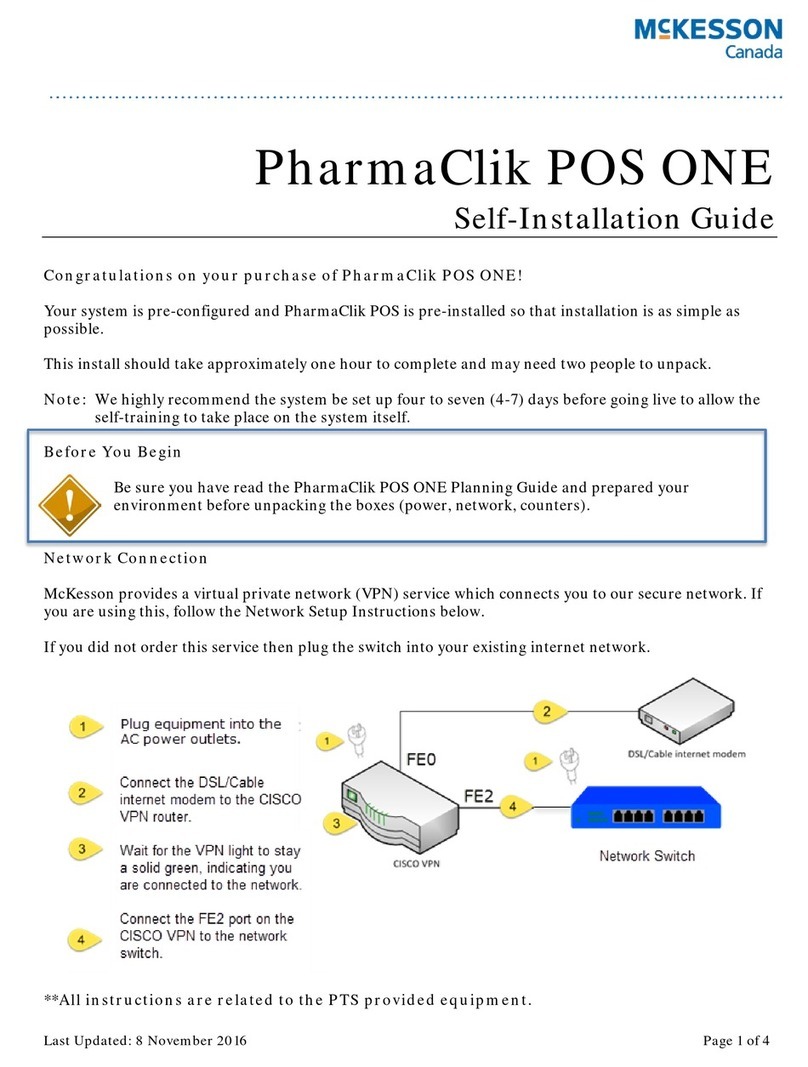
McKesson
McKesson PharmaClik POS ONE installation guide
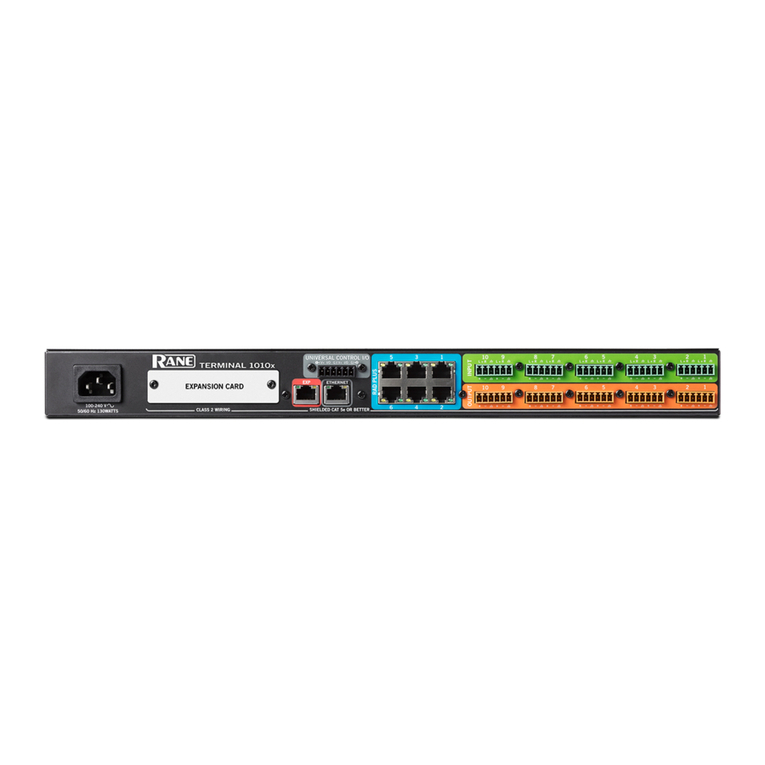
Rane
Rane 1010X manual

Cellhire
Cellhire Cobham Explorer 510 Set-Up and App use
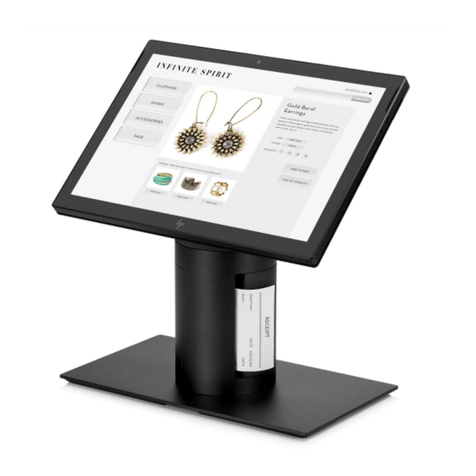
HP
HP Engage Go Mobile System Product End-of-Life Disassembly Instructions
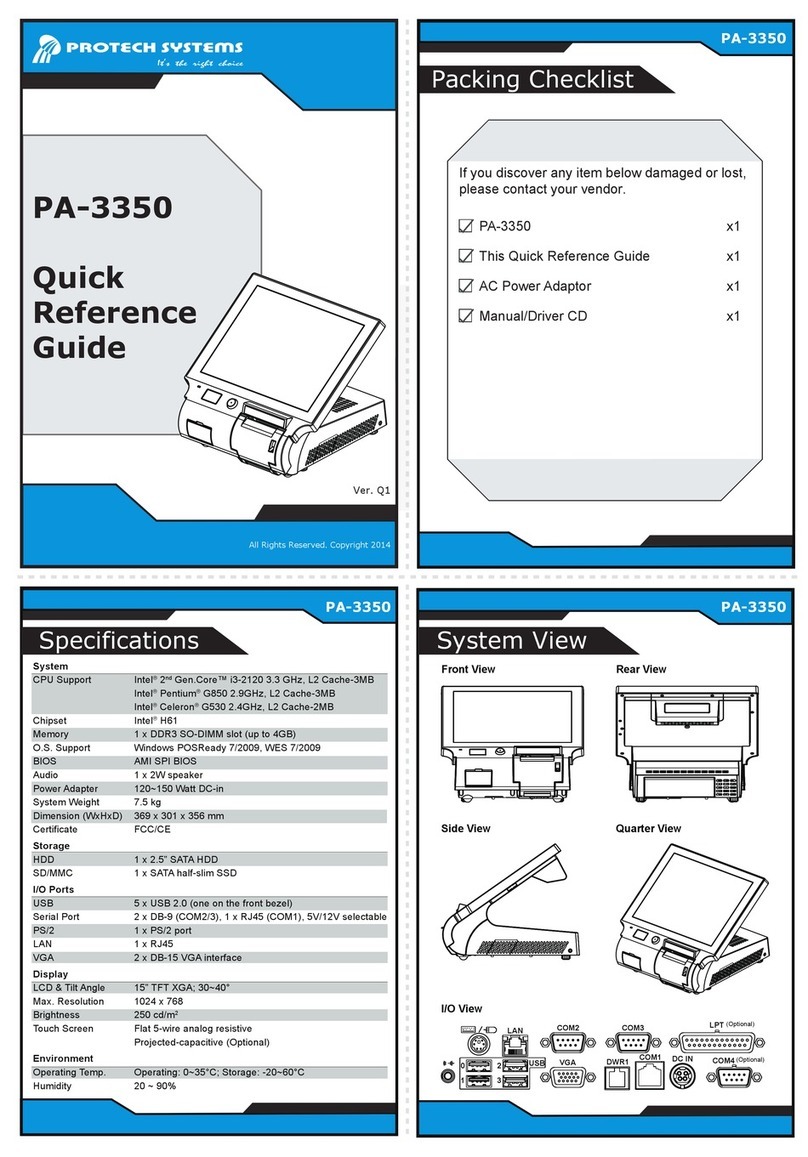
Protech Systems
Protech Systems PA-3350 Quick reference guide
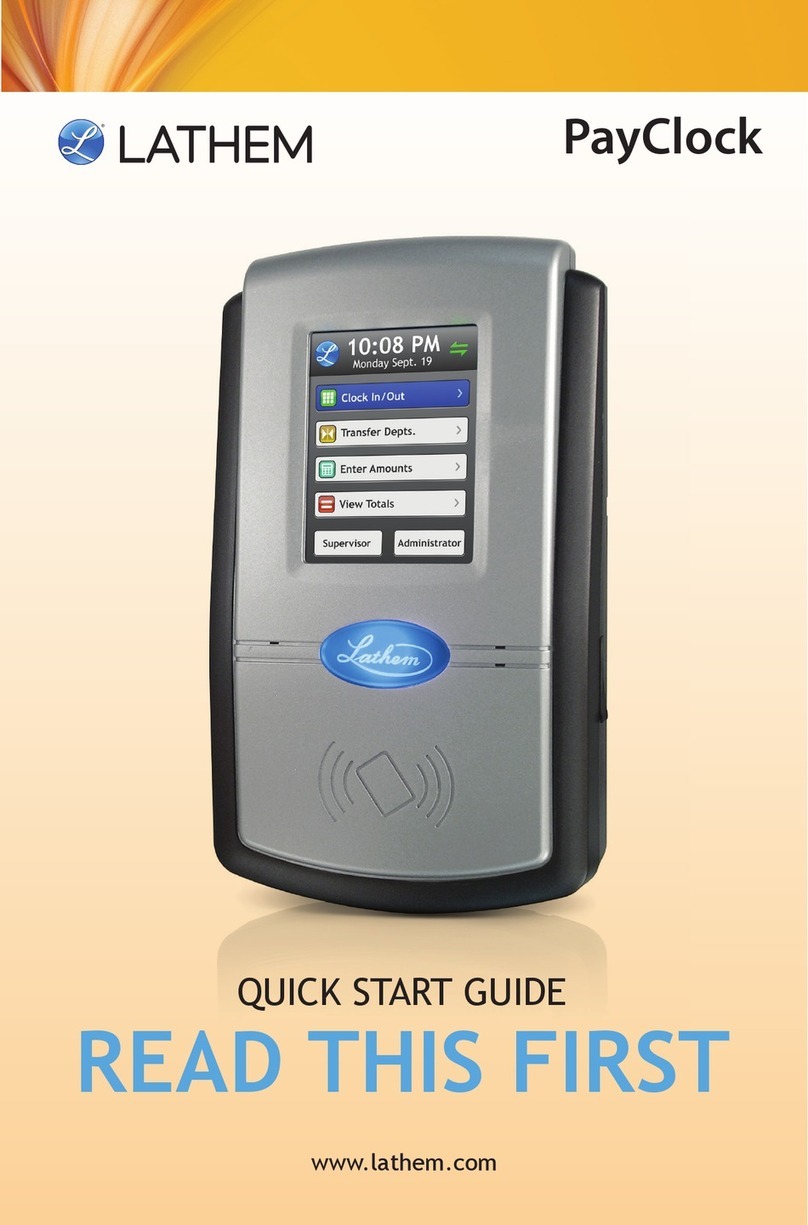
Lathem
Lathem PayClock PC600 quick start guide
